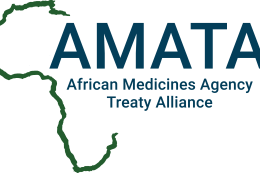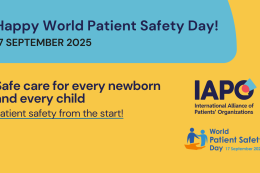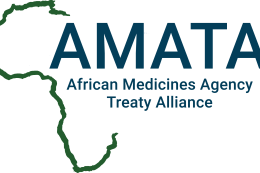UK Supreme Court closes the gap between ‘legal consent’, ‘informed consent’ and the ‘best interest’ of the patients!

UK Supreme Court (UKSC) judgment in Montgomery v Lanarkshire Health Board has closed the gap between ‘legal consent’, ‘informed consent’ and the ‘best interest’ of the patients. The full judgment, the point of law decided and the rationale for the decision (ratio decidendi) of this important case concerning patient information, advice and consent have just filtered through into clinical practice now in commonwealth law jurisdictions. The Royal College of Surgeons, acting upon this judgment, has just issued new guidelines on patient consent in October 2016.
When a panel of seven Law Lords sits on a UK Supreme Court (UKSC) appeal hearing, you can bet something is afoot. Insiders will tell you that a large panel indicates that there is about to be a profound change of law that will not only affect the UK, but also influence many courts in ‘common law’ jurisdictions like Australia, Canada, India, Kenya and even the USA. Some court watchers say that if Lord Neuberger (President of the UKSC) and Lady Hale (Deputy President UKSC) sit together on a panel, you are about to witness history in the making!
So it was on 22 July 2014; seven Law Lords heard the appeal in the Montgomery v Lanarkshire Health Board [2015] UKSC 11, [2015]. This case had gone through the entire UK law system, showing persistence and confidence of the litigant and her legal team, and ended up at the doorstep of the UKSC after having exhausted all forums to seek justice.
The facts were that a pregnant diabetic type 1 patient had not been warned by her obstetrician that because diabetic mothers have bigger babies that are relatively large to the size of the mother’s pelvis, that there was an inherent risk that natural birth may result in shoulder dystocia as the birth maybe be obstructed. Had she known and appreciated this risk, she would not have elected to have a natural birth but gone for a Caesarean. She had an obstructed natural birth in 1999 that resulted in life-changing injuries to her baby and her.
The heart of the issue in this case was about the massive societal change that had taken place with the advent of e-health and patient rights movements that had shaped modern practice and attitudes of physicians that their consultations should be patient-centric and give the patient ALL the timely, accurate and relevant information needed for her to make an ‘informed choice’ and to give her true ‘informed consent’, or even ‘informed dissent’ if she does not elect a procedure that evidence shows is in her ‘best interest’.
Physicians in practice, however, were working to the antiquated standards set by the principle of ‘legal consent’ and could withhold information if they believed it was not material or in the patient’s ‘best Interest’.
The obstetrician, in her evidence, had said that the mother would have, if she had been given all the relevant risk profile and statistics about diabetic mothers and shoulder dystocia, opted out of natural birth and gone for an unnecessary Caesarean section. The obstetrician withheld information on the risks in the mother’s best interests as the mother would have made an irrational choice based on the statistics!
The law for a long time had taken the common law obligations of ‘legal consent’ as the threshold for advising patients rather than the more modern and real-life principles that patients are well informed, health literate and have rights to elect or deny any treatments and be responsible for the consequences of this choice as fully autonomous agents. Legal consent and the law was defined by the Sidaway v Board of Governors of the Bethlem Royal Hospital [1985] AC 871 [1985] 1 All ER 643, which was relying on the ‘Bolam Test’ defined in the Bolam v Friern Hospital Management Committee [1957] 1 WLR 582:
When advising the patient, the doctor was not guilty of negligence if she had acted in accordance with a practice accepted as proper by a responsible body of medical practitioners skilled in that particular art. There was no obligation to provide patients with unsolicited information about risks if the mention of risks could have a detrimental effect the patient's mind and if it deterred the patient from undergoing the treatment that the doctor believed was in her best interest.
The obstetrician maintained that she had got the patient’s ‘legal consent’ and therefore was not negligent. She was backed in fact and law by the whole of the lower court system that she had legal consent and had satisfied Sidaway v Board of Governors of the Bethlem Royal Hospital and the Maudsley Hospital when she gave her advice.
The UKSC, however, allowed the litigant's appeal and ruled that the Bolam Test had no place in the consideration of such cases concerning patient advice and consent in modern times. It adopted the full decision of the High Court of Australia in Rogers v Whittaker [1992] HCA 58, (1992) 175 CLR 479. They changed the law and closed the gap between ‘legal consent’, ‘informed consent’ and ‘best interest’ of the patients.
Physicians will now have to show that they have gone through the whole spectrum of activities in supporting the patient access ALL the information and advice, including supporting more vulnerable patients access a patient advocacy service, and log this in their medical records to avoid liability for negligent advice. The Royal College of Surgeons Guidelines: Consent expands on this.
This UKSC panel had lived up to its expectation. Normally, a panel of three or five sits on a run of the mill cases. A notable ‘seven-panel’ that had to meet not once, BUT twice, and on the same case, reversing its own judgment in the second sitting (very exceptional!) was the General Pinochet extradition hearing In Re Pinochet 1998 . That panel sent a message to all NGO’s not to have a Law Lord as a patron of your charity as that would compromise your position in important advocacy and litigation matters!
Cases considered
High Court Australia: Rogers v Whittaker [1992] HCA 58, (1992) 175 CLR 479
United States Court of Appeals, District of Columbia Circuit: Canterbury v. Spence ((18) (1972) 464 F 2d 772)
Supreme Court of Canada: Reibl v. Hughes ((19) (1980) 114 DLR (3d) 1)



